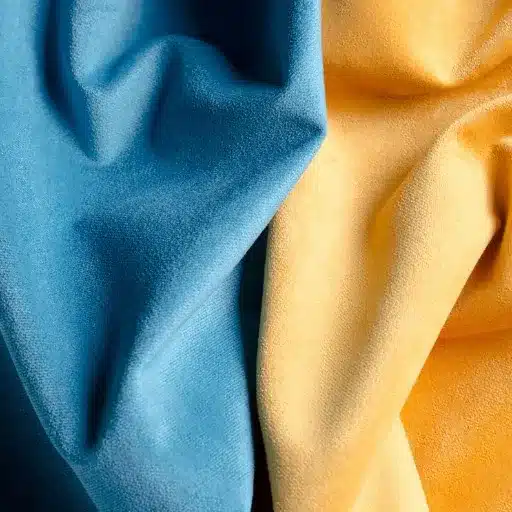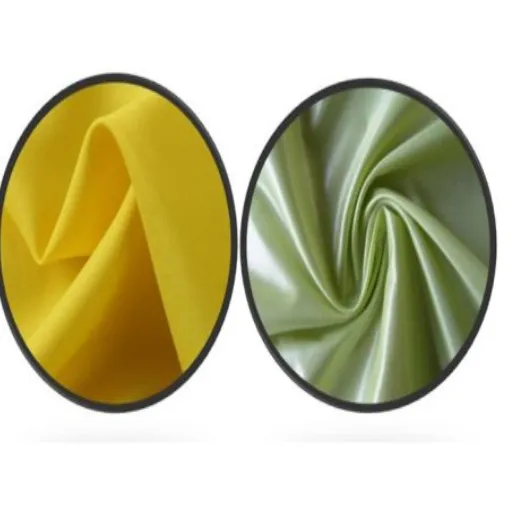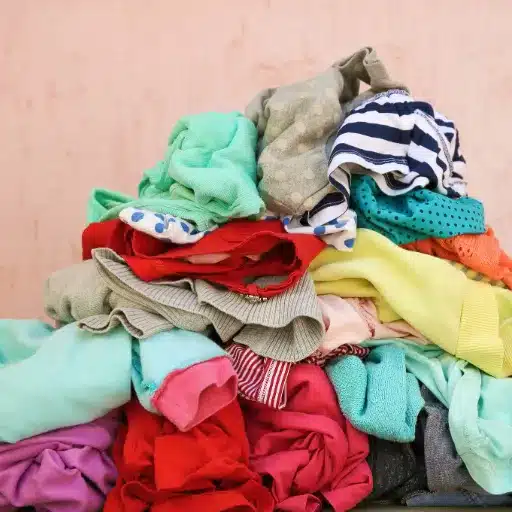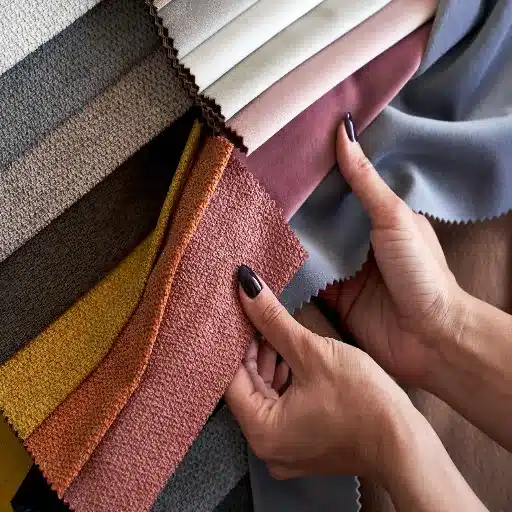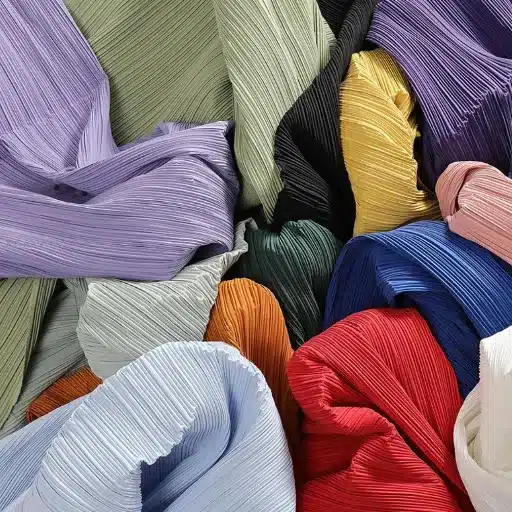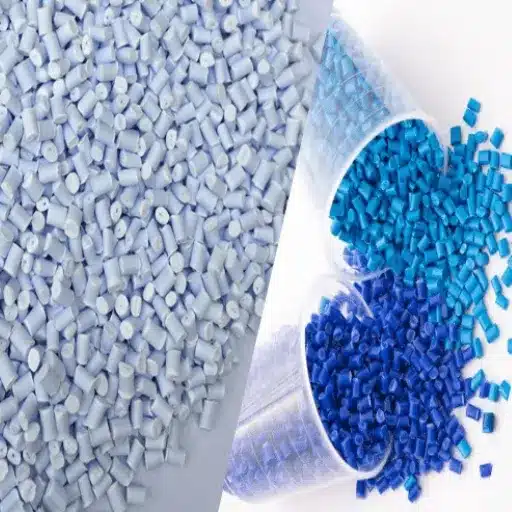The polyamide-versus-polyester debate is the most common topic of discussion when it comes to choosing fabric for clothing, outdoor gear, and home textiles. While many consider it just another of those similar synthetic fibers, these two differ from each other in sufficient ways within their respective applications. Are you looking for exemplary durability, a moisture-wicking nature, or budget considerations? This guide outlines the significant differences between polyamide and polyester, including their constituent strengths, to help you make an informed decision. The blog will become a one-stop resource for any shopper or intersectional fabric lover who wants to gain a concrete understanding of what sets the two widely used materials apart in 2025 and beyond.
Understanding Polyester and Polyamide Fabrics
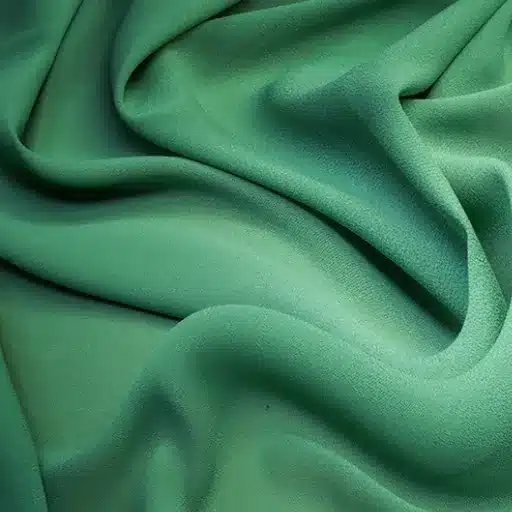
What is Polyester?
Polyester is a synthetic fiber derived from petroleum and is one of the most popular textiles used worldwide. It is frequently used in clothing, furnishings, and industrial applications due to its sturdiness, resistance to shrinking, tensile strength, and versatility. Polyester fabric undergoes a complex chemical process, primarily involving the polymerization of ethylene glycol and terephthalic acid.
Key Features:
- Water resistance for outdoor gear and sportswear
- Made with recycled materials in newer versions
- Cheap and versatile across various industries
- Excellent tensile strength and durability
What is Polyamide?
Polyamide, also commonly referred to as nylon, is a synthetic polymer created by the condensation reaction involving diamines and dicarboxylic acids or lactams. Polyamide has been considered the best for applications in textiles, automotive components, and industrial purposes, thanks to its enormous durability and extreme wear resistance.
Key Features:
- Excellent wear resistance and abrasion protection
- Good elastic properties and flexibility
- Superior moisture absorption capabilities
- Bio-based alternatives being developed
Function of Elastane in Fiber Blends
Elastane, commonly referred to as Lycra, is considered a synthetic fiber due to its exceptional stretching properties. Elastane in fabric mixes enhances textile stretch and recovery, thus giving the impression that the garment returns to its original shape after usage. Usually, it is combined with fibers like cotton, polyester, or nylon to create an active feel, making it a perfect candidate for activewear, swimwear, and compression wear.
Performance Enhancement: Experiments revealed that the inclusion of 2-10% elastane into any fabric blend truly maximized its stretch and flexibility while maintaining its strength. Hence, elastane is a critical ingredient in any performance apparel where freedom of movement and durability are paramount. Further advancements in fiber technology have led to the creation of elastenes that are leaner and perspiration-resistant, thereby increasing their desirability for the lifestyle and sports arenas.
Key Differences Between Polyamide and Polyester
Mechanical Properties of Polyester Vs Polyamide
While both polyester and polyamide are synthetic fibers, they greatly differ in their mechanical properties, which, in turn, determine the scope of their applications in various industries. Polyester has long been recognized for its exceptional tensile strength, making it a preferred choice in applications where resistance to wear, friction, and abrasion is required. Given its molecular strength, polyester exhibits outstanding dimensional stability, meaning it will retain its original shape and size even after washing or being subjected to tension.
| Property | Polyester | Polyamide |
|---|---|---|
| Tensile Strength | Exceptional – resists wear, friction, abrasion | High-impact resistance, withstands stress |
| Elasticity | Good dimensional stability | Superior flexibility and elasticity |
| Moisture Absorption | Lower absorption, quick-drying | Higher moisture absorption capacity |
| Melting Point | ~260°C – higher thermal stability | ~220°C – slightly lower |
On the other side of the matter, polyamide or nylon, as it is commonly referred to, is distinguished by its highest degree of elasticity and flexibility. High-impact resistance and the ability to withstand tremendous stress without breaking make it suitable for high-grade applications, such as hosiery, ropes, and industrial-strength fabrics. From another perspective, polyamide can absorb more moisture than polyester, which sometimes affects its performance in humid atmospheres that can degrade it.
They have melting points (m.p.) that determine their thermal stability: polyester melts at about 260°C, polyamide slightly less, around 220°C. These, along with factors relating to their particular weaknesses and strengths, will distinguish their applicability for certain purposes in textiles, industrial materials, and performance wear.
Durability: Polyester vs Polyamide
Depending on the application, polyamide and polyester fibres are both recognized for their durable properties. In general terms, polyester fibers are considered more resistant to stretch and shrinkage and thus tend to retain their dimensions well over time. This makes polyester a suitable candidate for items that require long-term dimensional stability, such as sportswear and outdoor gear. Abrasion resistance is another property that makes the polyester fibre highly useful in applications requiring heavy friction.
Polyester Durability Advantages
- Superior resistance to stretch and shrinkage
- Excellent dimensional stability over time
- High abrasion resistance for heavy friction applications
- Better UV resistance for outdoor use
- Maintains shape after repeated washing
Polyamide Durability Advantages
- Exceptional tensile strength and elasticity
- Superior resistance to tearing under heavy loads
- Excellent performance in industrial applications
- Maintains flexibility in lower temperatures
- Superior abrasion resistance in high-friction conditions
In contrast, polyamide (more commonly known as nylon) is renowned for its exceptional tensile strength and elasticity. This characteristic enables it to resist tearing and damage from heavy loads more effectively, making it more highly favored for industrial ropes, parachutes, and durable hosiery. Comparing the abrasion-resisting power of polyamide with polyester, it is, however, fairly equal, if not slightly better, in top-end conditions.
In addition, both materials demonstrate high resistance to environmental factors; however, polyester is considered better suited for outdoor use, as it is more resistant to UV rays and prolonged exposure to sunlight. Polyamide is excellent in lower temperatures, holding up its flexibility and strength even when other fibers may fail. These strengths, when considered together, demonstrate why polyester and polyamide continue to play essential roles in modern textile engineering across various industries.
Abrasion Resistance: The Two Materials Compared
Most abrasion resistance stands as a significant performance factor in comparing polyester with polyamide in textile finishes. Polyester resists wear and tear very strongly; therefore, it is suitable for applications with repetitive friction and heavy usage, such as outdoor gear and industrial fabrics. In contrast, polyamide possesses excellent resistance to repeated abrasion. The literature emphasizes that polyamide fibers often exhibit higher resistance to surface damage under high-friction conditions than polyester, making them suitable for applications in sportswear, carpets, and tire cords.
Abrasion Performance Analysis
Polyamide Performance: From a numerical perspective, polyamide materials can withstand a higher number of abrasion cycles before any visible wear is observed when tested under standard conditions, thereby accentuating their lifespan in heavy-duty applications.
Polyester Performance: Polyester, on the other hand, though it fares slightly less healthy against prolonged abrasion when compared with polyamide, is better against stretching and degradation over time. When weighed against each other, the utility and the stresses borne by the article-the rubbing it faces daily or the direct impact of the external environment-attain the level of a decisive factor in determining the right choice.
Environmental Impact of Polyester and Polyamide
Recycling Polyester and Polyamide
Recycling polyester and polyamide is crucial in preventing environmental damage, as these two materials are widely used in the textile industry and other industrial applications. Polyester is largely recycled mechanically or chemically. Mechanical recycling will melt and re-spin used polyester into new fibers, although there is an issue that the quality will deteriorate slightly over time. While chemical recycling breaks down the material into its raw monomers to generate high-quality recycled material, it requires energy and is currently less widely available.
| Recycling Method | Polyester | Polyamide |
|---|---|---|
| Mechanical Recycling | Melting and re-spinning; quality deteriorates slightly over time | Similar process but requires separation from textile blends |
| Chemical Recycling | Breaks down to monomers; high-quality results but energy-intensive | Depolymerization process; excellent durability and quality |
| Current Rate | ~15% globally recycled | Growing infrastructure for post-consumer waste |
Several methods can be used for similar recycling of polyamides, commonly known as nylon. Through chemical recycling, such as depolymerization, polyamide can be broken down into its building blocks, thereby conferring durability and quality to the recycled material. The problem, however, lies in separating polyamide from textile blends.
Industry Progress
The recycling industries are continually evolving their processes in an effort to improve efficiency and cost-effectiveness, thereby maintaining the circular economy. Some research supports that increasing the world’s rate of polyester fabric recycling from the current level of about 15% could considerably reduce GGE and resource depletion. Polyamide recycling solutions for post-consumer and industrial wastes are promoted to enhance infrastructure and sustainability. Hence, all consumers who choose recycled polyester or polyamide items can actively participate in reducing textile waste and conserving resources.
Eco Alternatives and Solutions
Environmentally friendly material production is vital to saving the Earth from the impact of the fashion and manufacturing industries. Natural fiber-embracing options, such as organic cotton, hemp, or bamboo, are grown without harmful pesticides and require less water than conventional cotton, placing a lighter burden on nature and offering more biodegradable alternatives for end-of-life disposal.
Natural Alternatives
- Organic Cotton: Grown without harmful pesticides
- Hemp: Requires less water than conventional cotton
- Bamboo: Rapidly renewable and biodegradable
- Biodegradable Options: Better end-of-life disposal
Technological Innovations
- Bio-fabricated Materials: Lab-grown alternatives
- Mycelium Leather: Plant-based durability
- Waterless Dyeing: Energy-efficient processes
- Biodegradable Synthetics: New fiber technologies
New strands of technologies in textile manufacturing have paved the way for the production of biodegradable synthetic fibers and lab-grown materials. Bio-fabricated leather alternatives made from mycelium and other plant sources are gaining popularity for their durability, environmental sustainability, and lower carbon footprint. Another technology advances waterless dyeing techniques to an energy-efficient and environmentally friendly method for dyeing textiles, thereby preventing water pollution.
Circularity is gaining traction as a key focus in the fashion industry. Sources of rental clothing, resale platforms, and repair programs contribute to extending the life of garments and reducing waste. The brand utilizes a closed-loop production system, where discarded fabrics are milled and then transformed into new products, thereby reducing its reliance on virgin materials.
Now, as consumer behavior begins to take hold, these practices gain momentum—patronizing transparent brands that make noble eco-conscious commitments, buying worthy artifacts that have a long lifespan, and discouraging impulse buying to foster a culture of environmental awareness. All of these combined are showing the way forward to a sustainable future in the textile industry.
Future Trends in Sustainable Fabrics for 2025
Influenced by innovation and growing consumer demand for greener alternatives, 2025 is expected to witness significant changes in sustainable fabrics. The rise of bioengineered textiles, including lab-grown silk and mycelium leather, is competing with resource-intensive traditional materials. These fabrics are far more innovative than their natural counterparts in terms of production and lower environmental impacts.
2025 Sustainability Trends
Circular Fashion
Recyclable textiles with closed-loop systems and advanced recycling methods
Blockchain Integration
Supply chain transparency and traceability for informed consumer choices
Alternative Fibers
Hemp, seaweed, and banana-based textiles with lower ecological footprint
Further along will be circular fashion initiatives, creating recyclable textiles. These materials are disposed of in closed-loop systems through sophisticated recycling methods, which recover and repurpose materials such as polyester and cotton, thereby reducing textile waste. Blockchain applications are likely to be integrated to provide transparency and traceability in supply chains, allowing consumers to make informed choices and purchase better options.
And regenerative agriculture is starting to gain traction as a means to produce climate-positive textiles. Therefore, there could be a greater potential for rotation crops or organic cotton farms to maintain soil health and minimize carbon emissions. In the realm of alternative fiber-based products, increased utilization of hemp-based, seaweed-based, or banana-based textiles is expected to continue, along with their advantages for ecological footprint and functional versatility.
Taken together, these movements present a strong case in favour of aligning the textile industry with global sustainability ideals and fostering a future based on a balance of innovation and environmental stewardship.
Advantages and Disadvantages of Both Fabrics
When to Choose Polyester
Polyester is a good choice when durability and resistance to wear and tear are the prime concerns. Due to its synthetic nature, it can withstand a certain amount of wear and tear, making it ideal for activewear, outerwear, and home furnishings such as upholstery or curtains. Polyester has excellent moisture-wicking properties, making it the top choice for athletic apparel, as it keeps the fabric dry even during heavy exertion.
Polyester Advantages:
- Excellent moisture-wicking properties
- Wrinkle resistance and quick-drying
- Great for travel and care-free clothes
- Cost-effective and widely available
- Recyclable options reduce environmental impact
Wrinkle resistance, coupled with quick-drying properties, makes it really easy for traveling and care-free clothes. However, it still has an environmental drawback since it is derived from petroleum. Using recycled polyester is a way to address this concern, as it utilizes post-consumer waste, such as plastic bottles, thereby reducing the need for virgin materials. Polyester is an efficient and versatile fabric solution for durable and cost-effective purposes, particularly in active environments.
When to Choose Polyamide
Polyamide, also known as nylon, is a suitable choice for applications requiring high durability, elasticity, and resistance to wear and tear. Polyamide must withstand abrasion, thus creating the perfect combination of flexibility, abrasion resistance, and firm performance for sportswear, hosiery, and outdoor gear. It also has moisture-wicking abilities to keep the wearer comfortable during high-intensity activities.
Polyamide Advantages:
- Superior elasticity and flexibility
- Exceptional abrasion resistance
- Lightweight yet high tensile strength
- Excellent for high-performance applications
- Recycling methods reducing environmental footprint
These fibers are lightweight yet possess a considerable tensile strength, making them suitable for use in making backpacks and ropes. Alongside being petroleum-based, technological advancements have enabled methods for recycling polyamide, thereby reducing the environmental footprint by reusing pre- and post-consumer waste. When strength, stretch, and comfort come into consideration, polyamide is surely a fabric solution that shall never fail.
Cost Considerations and Market Trend
When discussing polyamide as a material, cost is a critical factor influencing its eventual market acceptance and suitability for the application. The petroleum-based polyamide is widely available, allowing for a relatively competitive pricing juxtaposition to be established. However, fluctuations in crude oil prices can make it more expensive, thereby affecting industries further, depending on the material. In contrast, recycled polyamide tends to be more costly due to the entire process of collecting, sorting, and repurposing waste materials for use in production.
Market Dynamics
Market trends indicate an even more substantial interest in sustainable alternatives, with both consumers and manufacturers prioritizing environmentally friendly products. It is anticipated that innovations in manufacturing, such as energy-efficient recycling technologies and bio-based polyamides, will help stimulate demand and cost efficiencies in the long term. Furthermore, it is accepted that fashion, automotive, and sportswear industries have been adopting recycled polyamide to incorporate their global sustainability goals into the modern market at an increasing rate.
Real-World Applications and Use Cases
Textile Innovations with Polyester and Polyamide
The ability and versatility of polyester and polyamide have opened numerous opportunities and driven innovations in the textile industry. In my opinion, one of the most significant innovations in polyester is that it mimics natural fibers with greater durability and resistance to wrinkles, which also makes them more or less trouble-free for handling. This makes polyester suitable for a wide range of purposes, including low-cost everyday clothing, performance clothing, and even home furnishings. Recycled polyester, on the other hand, carries the weight of a greener solution by reducing the accumulation of plastic waste in the environment while still offering a fabric that meets consumer and ecological requirements.
Polyester Innovations
- Mimics natural fibers with superior durability
- Wrinkle-resistant and low-maintenance
- Versatile for clothing, performance wear, home furnishings
- Recycled versions reduce plastic waste
Polyamide Innovations
- Strong, lightweight, and stretchable textiles
- Ideal for tights, swimsuits, and sports uniforms
- Superior moisture-wicking capabilities
- Recycled options bridge innovation and sustainability
On the contrary, polyamide has become indispensable as a fibre for creating strong, lightweight, and stretchable textiles. I find it almost poetic that the industries of fashion and activewear have been using polyamide for tights, swimsuits, and sports uniforms, as Polyamide is stretchable and moisture-wicking. As far as its performance is concerned, the use of recycled polyamide has made significant strides in addressing environmental issues, making it an excellent example of how this material can bridge the gap between innovation and sustainability.
In general, these developments in polyester and polyamide further illustrate that advanced materials are the driving forces behind an efficient, innovative, and sustainable future for the textile industry. By emphasizing both functional and ecological solutions, these fibers are becoming the yardstick by which contemporary textile design and production are measured.
Consumer Preferences in 2025: Which Fabric is Winning?
Demanding consumers will not accept anything less than that, whether it be environmental respect or aesthetic appeal. Respecting the environment became the principle on which the market saw sustainable fabrics, such as organic cotton, recycled polyester, and other fascinating bio-based alternatives, experiencing an impressive rise. Not only do these materials help reduce the load on the earth, but they also enable the retention of durability and quality expected by consumers.
2025 Consumer Priorities
Performance Features
Breathability, moisture-wicking, wrinkle resistance, antimicrobial properties
Versatility
Multi-functional fabrics for professional and active wear
Transparency
Clear sourcing information and ethical production practices
I’ve noticed a growing demand for performance fabrics that cater to the busy, active lifestyles of today. Consumers want a certain amount of versatility in their textiles, including breathability, moisture wicking, wrinkle resistance, and, for some, even antimicrobial qualities. A combination of comfort and state-of-the-art functionality is especially sought after, whether in their professional attire or their active apparel. The customer will no longer be willing to compromise between style and functionality; contemporary fabrics have proven that they can offer both.
On the other hand, the last and most crucial factor behind purchasing decisions seems to be the material sourcing and production transparency. I have personally observed that brands that openly disclose their sustainability efforts and labor practices gain more trust and loyalty. Contributing to increasingly conscious purchasing patterns, this case highlights the importance of fabric innovation by demonstrating that the most successful textiles in 2025 will be those that can meet the demand for sustainable, versatile, and ethically sourced materials.
Case Studies: Brands Utilizing Polyester and Polyamide
Throughout the years, many companies have served as inspiring examples of using polyester and polyamide to create new-age, sustainable products. One such example is Patagonia, which has been a pioneer in the use of recycled polyester. By taking discarded plastic bottles and converting them into fleece jackets and other forms of outdoor apparel, Patagonia has not only set an example for waste disposal. Still, it has become the standard-bearer for the industry as a whole. Their insistence on transparency in sourcing materials and recycling offers intense visibility into how synthetic fibers, such as polyester, can be utilized with care to further environmental sustainability.
Patagonia – Recycled Polyester Pioneer
Innovation: Converting plastic bottles into fleece jackets and outdoor apparel
Impact: Set industry standards for waste disposal and environmental sustainability
Key Success: Transparency in sourcing and recycling processes
Adidas x Parley – Ocean Plastic
Innovation: Using marine plastic waste for athletic products
Impact: Combines performance with ocean pollution combat
Key Success: High-grade athletic clothing from recycled materials
Stella McCartney – Ethical Luxury
Innovation: Recycled polyamide in high-fashion items
Impact: Proves luxury can be sustainable and ethical
Key Success: Addressing global challenges through fashion
Another standout example is Adidas, particularly in collaboration with Parley for the Oceans. By using recycled polyamide and polyester made from marine plastic waste, Adidas has redefined how these materials can be utilized to create performance products while simultaneously combating ocean pollution. They have spearheaded an initiative that has led to athletic clothing and footwear of the highest grade, marrying environmental protection considerations with those of durability and functionality. This has found resonance with consumers, proving that synthetic fibers don’t need to be a compromise to one’s values.
Finally, Stella McCartney, among others, pushes the boundaries of ethical luxury by incorporating recycled polyamide into their creations. The company has demonstrated that the material can be transformed into handbags and high-fashion items suitable for both trend-conscious and eco-conscious individuals. The exciting aspect is seeing how these brands are leveraging polyester and polyamide not merely for the pragmatic and versatile aspects of these materials, but also to bring into focus some significant global challenges, such as waste reduction and sustainability.
Reference Sources
-
The Ultimate Guide: Polyester vs Polyamide for Clothing
This source discusses the durability and abrasion resistance differences between polyamide and polyester. -
Polyamide vs Polyester: Differences and Applications
It covers key differences, including properties, comfort, and moisture management. -
Polyamide and Polyester: What’s the Difference?
This blog explains the softness, stiffness, and other physical characteristics of both materials. -
Polyamide or Polyester: What is the Difference and Which to Choose?
It highlights the heat and UV resistance differences between the two fabrics. -
Nylon vs Polyester: Which Fabric is Best for Your Needs?
This guide explains the chemical processes and applications of nylon (a polyamide) and polyester.
Frequently Asked Questions (FAQs)
What are the differences between polyamide and polyester?
Polyamide and polyester are two synthetic fibers most commonly used in the apparel industry. Key differences between polyamide and polyester include the chemical compositions and properties. Polyamide is formed from amide linkages, whereas polyester is composed of ester linkages, specifically polyethylene terephthalate. Polyamide is sought after for its extraordinary ability to stretch and its abrasion resistance. In fact, it is preferred for active wear and sportswear. Conversely, polyester is relatively hydrophobic, meaning it can absorb less moisture and dry rapidly. Therefore, the choice between polyamide and polyester is primarily determined by the intended use of the garment.
Are polyamide and polyester the same when it comes to wicking moisture away?
Polyamide and polyester differ in their ability to wick moisture. Both fabrics are breathable and therefore suitable for clothing; however, polyamide generally has better moisture retention and can therefore absorb sweat and carry it away from the body more effectively. This places polyamide high on the list of desirable textiles for next-to-skin garments, particularly in high-performance activewear. Polyester is much more hydrophobic and does not absorb moisture much. Therefore, it dries much faster than would be expected, but can be rather uncomfortable on the skin. The choice between the two materials will depend significantly on the garment.
How do endurance and mechanical properties compare between the two?
In terms of durability, polyamide and polyester exhibit significant differences in mechanical strength. Polyamide is highly elastic and abrasion-resistant, and it does not tend to wear down significantly over time, especially in activewear. In contrast, polyester resists fading and shrinkage, thereby lasting longer in various fabrics. Both materials are durable, but polyamide may be better in situations where mechanical strength is particularly high, such as in outdoor apparel. Hence, the durability specifications of each fabric must be evaluated when deciding which fabric is better suited for particular applications.
The environmental impacts of polyamide and polyester?
With the widespread consumer awareness about environmental issues, the ecological impact of polyamide and polyester plays a vital role in today’s world. Polyester is made from recycled materials, such as recycled PET, which helps reduce the carbon footprint. Preventing pollution from microplastics during washing can pose risks to aquatic ecosystems. Conversely, polyamides can also be made from bio-based raw materials, although they are mostly derived from petrochemicals. Knowledge about these can assist consumers in making informed choices about textiles and foster more sustainable practices in the garment industry.
Is polyamide or polyester better for sportswear?
Choosing between polyamide and polyester for sportswear depends on the performance requirement of the sport indeed. Polyamide is softer against the skin and excels at absorbing sweat, making it an excellent choice for intense workout sessions. Polyester, on the other hand, dries fast and resists wrinkles, which can undoubtedly be of advantage in casual sportswear and travel clothing. Additionally, polyester blends offer added durability and versatility in sportswear. Ultimately, the choice lies in one’s comfort preference, alongside what the activity demands.
What about the breathability aspect of polyamide and polyester fabrics?
Needless to state, both polyamide and polyester fabrics are breathable; their actual performance, however, might depend on the nature of the fabric construction. The tendency of polyamide is always towards superior breathability, allowing it to absorb moisture and, therefore, facilitate better airflow, making it suitable for performance attire. Polyester fabrics are said to be moisture-wicking and breathable, but can sometimes feel a little less comfortable against the skin, especially during intense workouts. The real breathability of either fabric is what makes standard activewear garments comfortable, so knowing its uses is indeed essential to making the correct choice.

